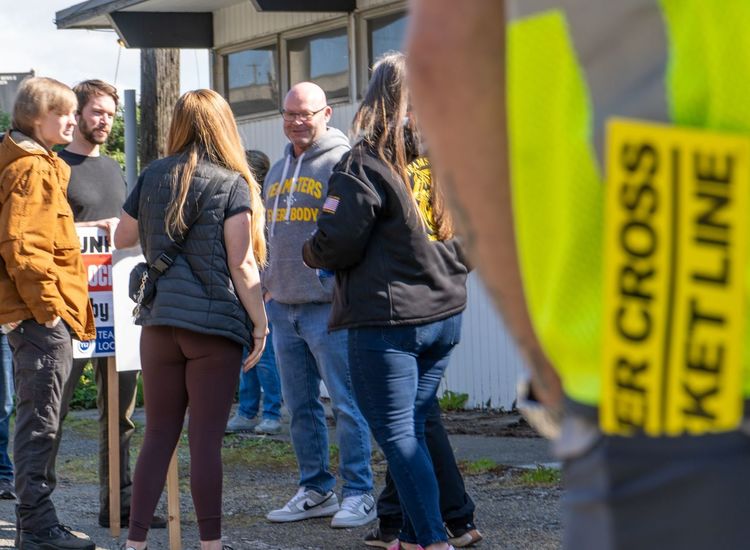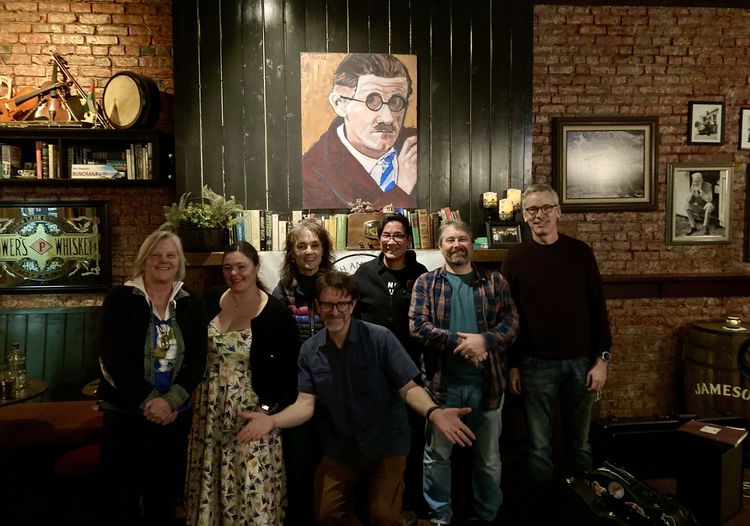A postcard of the Cluett, Peabody & Co. Collar Cuff and Shirt Factory, Troy, N.Y.
By Geoffrey Cobb
Irish women have played a long and prominent role in the history of American labor organizing. Celebrated Irish women union organizers like Mother Jones, Elizabeth Gurley Flynn and Mary Kay Henry have been at the forefront of the American labor movement, but the honor of forming America’s first sustained labor union belongs to a little known Irish immigrant Kate Mullany, who successfully organized her fellow collar laundry workers into America’s first female union during the Civil War.
We know little about Kate Mullany’s Irish birth, but other than it was during the Famine decade and she came to America as a child. Mullany and her family settled in Troy, New York, a magnet for Famine refugees who discovered that manufacturers there were hiring in a prosperous city, easily accessible by riverboat, 150 miles up the Hudson River from New York City. Men could work in heavy industry, and women could get jobs as domestics or in the thriving industry of collar-making.

Industry in 19th-century America was dangerous, especially for Irish immigrants who often did work native born workers would not. Kate’s father, the family breadwinner, died when she was a teen and because her mother was in poor health, Mullany went off to work to support her mother, older sister and two younger siblings.
She considered herself lucky to find employment in one of the 14 commercial laundries located in Troy, but the work and the conditions were hard. Kate and the other girls spent 12 to 14 grueling hours each day soaping, bleaching, starching and ironing the collars. Teamwork was important as the women depended on each other to do their part of the job properly. if they damaged any shirt or collar, they were fined. In the summer the heat was brutal, and girls were often burned by the red-hot irons or by boiling water. The chemicals used in processing the collars could also cause rashes. Fatigue at the end of 12- or 14-hour shifts also lead to accidents and injuries. If a woman was hurt, there was no workman’s compensation law yet in effect. Kate and the other collar workers earned $3 to $4 weekly, toiling long hours in such dangerous conditions.

Ruth Henry’s musical “Don’t Iron when the Strike is Hot” honors Kate Mullany’s work.
In 1864, at the age of 19, Kate began to formulate her plan for organizing the shirt collar laundry workers into a union. The collar laundresses had previously asked for a raise, but their request was ignored. She had heard her male neighbors, members of the Iron Molders’ Union, talk about banding together to form a union. And she had heard that the cigar makers and the printers had admitted female members. She viewed herself as a man’s equal as a worker and knew that the men would support their sisters in their effort to unionize.
Over 3,000 women, almost half of Troy’s female workforce were employed in the collar industry. Mullany realized that 90 percent of the white starched shirts, collars, and cuffs that had become the mainstay of men’s wardrobes were manufactured in her hometown. She was also aware that many of the collar laundresses faced a dangerous new health and safety hazard on the job. Newly introduced starching machines had badly burned many workers, which the factory owners ignored. Ironers were central to the industry and laundry owners recognized their importance by paying them higher wages than other laundry workers. The ironers’ wages were even higher than those received by factory workers.
Organizing would be a Herculean task. Women were often taught to be obedient and submissive to male superiors and not to demand higher wages. Working 12- to 14-hour days, as well as having other household responsibilities, the women had little time for unionizing. There were also no large meeting halls in which to discuss the union and with so many eager replacements willing to fill their shoes, job actions could be dangerous. Nevertheless, Thanks to sheer determination, hard work, and the assistance of the Iron Molders’ Union, in February 1864, Kate and her co-worker Esther Keegan organized approximately 300 women into the Collar Laundry Union, the first female union in the country.
A few days later, 300 women from 14 Troy laundries went on strike. Kate met with her union sisters to discuss their demands for a 20 to 25 percent wage increase and addressing the dangers of the new starching machines. At first, the laundry owners refused, adamantly stating they could not afford to pay the women more unless they passed it on to collar manufacturers. For five and a half days Kate, Esther and the others struck, and then on Feb. 28 a few of the owners gave in to their workers’ demands and the following day other followed. The strike had been a success.
In September 1868, Kate traveled to New York City to attend the National Labor Congress meeting held in Germania Hall. During the conference, Kate was nominated for the post of second Vice President. The delegates praised her for her great ability in organizing, building up the treasury of the Collar Laundry Union, and for her humanitarian work in support of her fellow union members. Kate was elected but decided to relinquish the office. The Congress appointed her assistant secretary, the first time a woman had been appointed to a national labor union office. The Union President said of Kate in his closing speech that: "We now have a recognized officer from the female side of the house – one of the smartest and most energetic women in America; and from the great work which she has already done, I think it not unlikely that we may in the future have delegates representing 300,000 working women.”
Kate and the other union members wanted to expand on their victory by creating a worker’s cooperative that would manufacture the shirt collars. Fearing the Union Line Collar and Cuff Manufactory might be successful, the manufacturers announced that they were putting a new paper collar on the market, which proved fatal to Mullany’s cooperative.
In February 1870, Kate and the other officers decided to dissolve the union. All members other than the leaders returned to work at their old wages. The union, though, had lasted more than twice as long as any previous women’s union and served as a model for the creation of the Starchers Union and the Joan of Arc Assembly of the Knights of Labor. Kate continued as a union activist and served as a member of the Starchers’ Union. Mullany died on Friday, Aug. 17, 1906. Although her union was ultimately defeated, Kate and her sisters had made history. The Kate Mullany House at 350 8th St., was declared a National Historic Landmark 1998, a part of the women’s Heritage Trail in 2006 and a National Historic Site in 2008. Mullany was inducted into the National Women’s Hall of Fame in 2000 and into Labor’s International Hall of Fame in 2016. A musical, “Don’t Iron when the Strike is Hot,” written by Ruth Henry, also honors Mullany, who a century after her death is finally gaining long overdue recognition.









